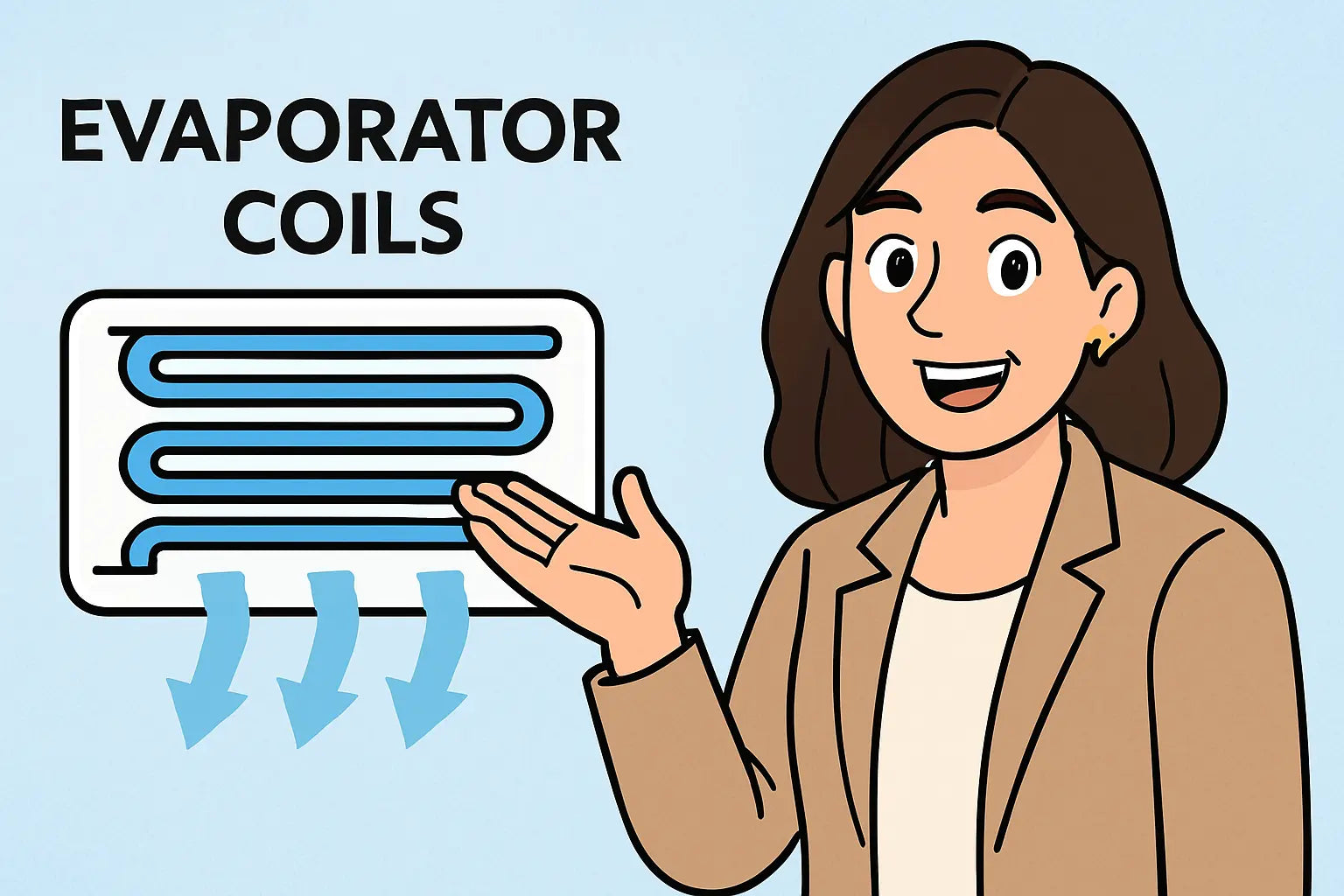Hey There, DIY Dynamos! 💁
It's your HVAC bestie, Savvy Mavi, back again to help you avoid the kind of rookie mistakes that can literally cost you cool comfort and hard-earned cash. Today, we're cracking the coil code on what size evaporator coil you need, how BTUs and tonnage tie in, and why proper matching isn’t just a recommendation—it’s a requirement.
So if you’ve ever squinted at a spec sheet thinking, “What in the Freon does 36,000 BTUs mean?” — you're in the right place. Let’s match it up, size it out, and make sure your system is purring, not panicking. 😎
Why Coil Sizing Even Matters (Spoiler: It REALLY Does)
Before we dive into the BTU charts, let’s zoom out. Your evaporator coil is the indoor MVP that absorbs heat from your home's air. When it’s the right size, it balances perfectly with your outdoor condenser and blower to deliver:
-
Better efficiency
-
Fewer breakdowns
-
Longer lifespan for your entire HVAC system
-
Lower energy bills (yes please!)
But if you mismatch that coil—even slightly? You could be facing short cycling, compressor strain, mold growth, and refrigerant chaos. According to Energy Star, improperly sized HVAC systems are among the top reasons for poor performance and efficiency loss.
The Golden Rule: Match Tonnage to BTUs 🔢
In HVAC world, 1 ton = 12,000 BTUs of cooling. Here’s a handy match-up chart you can screenshot or pin to your fridge:
| Coil Tonnage | BTU Rating | Typical Room Coverage |
|---|---|---|
| 1.5 Ton | 18,000 BTU | ~600–900 sq ft |
| 2 Ton | 24,000 BTU | ~900–1,200 sq ft |
| 2.5 Ton | 30,000 BTU | ~1,200–1,500 sq ft |
| 3 Ton | 36,000 BTU | ~1,500–1,800 sq ft |
| 3.5 Ton | 42,000 BTU | ~1,800–2,100 sq ft |
| 4 Ton | 48,000 BTU | ~2,100–2,400 sq ft |
| 5 Ton | 60,000 BTU | ~2,400–3,000 sq ft |
Need a bigger system? You’re probably looking at dual units or a commercial-grade solution—ask a licensed tech for help.
Coil Sizing Tips Straight from the Pros 👩🔧
1. Match Coil to Condenser
Don’t try to pair a 2.5-ton coil with a 3-ton condenser and hope it works out. You’ll get inefficient cooling, poor refrigerant flow, and potentially violate warranty terms. Coil and condenser should always be matched in capacity and refrigerant type (like R-32, which is more environmentally friendly than old-school R-410A. 🌎💨)
2. Don’t Oversize 'Just in Case'
Oversizing can lead to something called short cycling—where your system turns on and off constantly. That means more wear and tear, higher bills, and less moisture removed from your air (hello sticky summer nights). Department of Energy says: right-sizing is more efficient and safer for your system.
3. Account for Real-World Conditions
BTU needs aren’t just based on square footage. Consider:
-
Insulation quality
-
Number of windows
-
Ceiling height
-
Duct condition
-
Local climate
Use tools like the HVAC Load Calculator by Service Titan for a more accurate estimate.
The Coil Compatibility Checklist ✅
When shopping for a coil (whether vertical, horizontal, or multi-positional), you need to ensure:
-
Correct refrigerant type (R-32, R-410A, etc.)
-
Matching SEER/SEER2 ratings for system compatibility
-
Same tonnage as condenser
-
Matching metering device (TXV vs piston)
-
Physical size fits your air handler or furnace cabinet
Also, don’t forget airflow! A clogged or dirty blower can kill your coil’s performance.
Mavi’s Mini Myth-Busters 🧯
MYTH #1: “I can just go up half a ton for better cooling.”
TRUTH: That half-ton mismatch creates imbalances in airflow and refrigerant cycle. Don’t do it. Coil match-ups aren’t optional!
MYTH #2: “I just need the same brand as my outdoor unit.”
TRUTH: Brand isn’t the only thing that matters. Many HVAC brands share parts or offer universal coils, but you still need to match capacity, orientation, and refrigerant type. Sites like HVAC Know It All are great for exploring this deeper.
So... What If I Already Have the Wrong Size Coil? 😬
If your coil is too small or too large for your system, you might be seeing:
-
High humidity indoors
-
Long or frequent cycles
-
Ice buildup on the coil
-
Compressor issues
Solution? Replace the coil with a properly matched one or upgrade your full system for long-term savings. It’s not always DIY—call in the pros when needed.
Ready to Size Up the Smart Way? 🛒
Good news! You don’t need to figure this all out from scratch. The Furnace Outlet’s full evaporator coil collection has a range of coils sorted by tonnage, refrigerant, and configuration—with all the details upfront so you can shop smart and stress-free.
You’ll find:
-
Multi-position coils for tight installs
-
R-32 compatible options for modern systems
-
Verified specs for condenser pairing
-
Fast shipping, no fluff 🙌
Final Thoughts from Savvy Mavi 🧠💬
Listen, HVAC math isn’t sexy—but comfort math is. Getting the right size evaporator coil makes the difference between a chilled-out summer and a sweaty season of regrets. Whether you’re upgrading an aging system, installing a new one, or troubleshooting weird airflow issues, sizing your coil correctly will save you more than just energy. It’ll save your sanity. 🙃
So head over to The Furnace Outlet’s evaporator coil collection and start your match-making journey. And hey, if you ever need a hand understanding the difference between a TXV and a piston metering device—I got you. 😉
Is your evaporator coil freezing up? Visit my guide: Frost Alert!
Until next time, breathe easy and shop smart.
– Savvy Mavi







